The Real Market With Chris Rising – Ep. 2 Carl Muhlstein
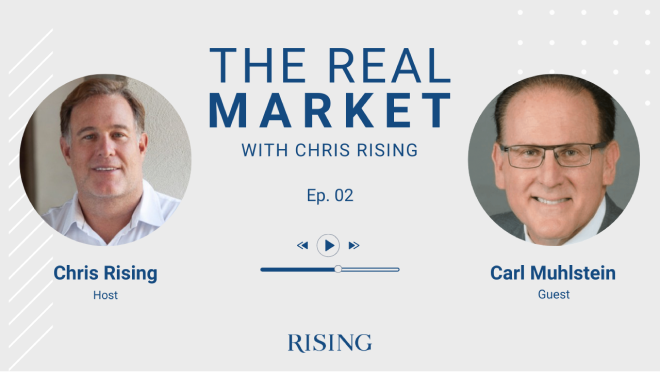
01:19 CR: I’m very pleased to have with me an old friend and a colleague in the business, someone I’ve known for a long time, Carl Muhlstein. And Carl is the international director at JLL. I don’t know if it’s “the”, but I like adding that, Carl. Thanks for coming on The Real Market with Chris Rising. I really appreciate it.
01:35 Carl Muhlstein: Thank you.
01:36 CR: Carl, can you just tell us a little bit about what you do in the real estate industry as a broker? Tell us a little bit about JLL, and tell us about how you wake up in the morning and focus on real estate.
01:50 CM: Fine. JLL is a global publicly traded real estate services firm, and I found my little place in this global giant as one of leading agency leasing people in the Los Angeles region. While we have probably 30,000 employees globally, here in the downtown area we have 28 brokers who specialize in landlord representation, and my team is one of the leading teams in the region.
02:27 CR: You’ve been focused on brokerage here in Southern California for quite a while. Can you give a little background on how you got into the business and a little bit of the history of the things you’ve done in real estate?
02:39 CM: Sure. Well, I was a journalism major in school, but I had an interest in real estate and took a lot of night courses at UCLA Extension. One recent graduate from University of Arizona, Steve Soboroff, came in to talk about shopping centers. And I enjoyed our conversation, and as a young student, I went up with my meek face and business card and said, “Can we have lunch some time?” And he was very gracious and said, “Yes,” and got me an entry level job in real estate.
03:18 CR: That’s terrific. At that time were you focused on being a broker or more on the principal side or the developer side? What caught your fancy?
03:28 CM: I went to work for Charles Kaplan, a retired attorney who owned three shopping centers, a variety of office buildings, etcetera. I was his girl Friday, chauffeur, bodyguard. My first day at work, he pointed to file cabinets full of leases and he said, “I want you to abstract every one of these leases. Here’s my in-house CPA and my in-house attorney. If you have any questions, you ask them.” Now, needless to say, this was before computers, and I got my start with a 12-column pad, pencils, and a lot of erasers.
04:13 CM: But it was fascinating to read leases where rents go up, rents go down over time, rents get adjusted for sales, tenants being responsible for everything, tenants being responsible for nothing. So with that, I enrolled in the California Continuing Education of the Bar. I took several classes about mortgage practice and about commercial leasing.
04:42 CR: Interesting.
04:43 CM: But I was a bit of a dreamer as a young person, and I looked to the big city. I went to interview with at that time, Coldwell Banker. And they said, “We don’t hire people without sales experience. We want you to go to Xerox first and learn how to sell copiers.” I didn’t wanna sell copiers.
05:05 CM: I went to Cushman & Wakefield, and I said, “It’s a simple value proposition. I will set up meetings on properties for sale, and you’ll go to meetings with me, and together we’ll do the business.” And that worked out extremely well.
05:24 CR: That’s terrific. And when did you decide that you were gonna get your sales license? Was that before you looked at brokerage, or did that generate you moving into where you’re really focusing on brokerage?
05:36 CM: I got it… In those days a Bachelor’s degree qualified for the experience component, and I had to take four classes which I did at UCLA Extension anyway. So I’d been a broker I believe since 1977.
05:55 CR: Terrific. Well, you’ve certainly seen a lot of changes over those years. You’ve seen firms go out of existence, firms grow and some go out of existence and come back. What was it, as you started in the business as a broker, that gave you the excitement that this was a industry you wanted to spend the rest of your career in? What really got, as you were sitting… ‘Cause a lot of people think of brokerage as a lot of cold-calling, a lot of grunt work before you can finally get your legs. What was it after you had the Soboroff meeting, that got you inspired, you’d had a little introduction to business, what was the bug about brokerage?
06:33 CM: I think brokerage served my creative outlet. It’s a little bit of sociology, architecture, psychology, urban planning, place making. It touches our lives in so many ways. And that’s what attracted me. I had studied photography at night school at Arts Center and realized the only life I was gonna change was my own, figuring out how to live on $400 a month. So I decided that’s perhaps made for a better avocation, and I was really looking for a creative vocation, and found it in real estate.
07:20 CR: Well, I would say, knowing you over the years, that one of your greatest strengths is your creativity. And one of the things that jumps out to me is you were one of the first brokers that I knew who had a Twitter handle. Can you talk a little bit about how you got involved with the social media piece, especially as it relates to real estate, and a little bit about how you use it?
07:44 CM: Sure. It came about completely by surprise. I was at a meeting with a client, one partner of a $200 million project. It was sort of a specialized product in a neighborhood that was limited as to what tenants it could seek. And I was reamed that for a $200 million asset, why do I produce so few tours? So rather than go back and mope and say, “Why am I being attacked?”, frankly, it made sense to me, why am I producing such few tours? I realized that I know the brokerage community and enjoy good relations. I have a lot of exposure to corporate real estate decision makers. But I decided Twitter might be an ideal way to reach out to heads of HR, the proletariat, the working people of these companies so when their bosses go out on tour, the employees and HR says, “Well gee, why isn’t Carl’s listing on the tour? That looks like a cool project.”
09:01 CM: One example of that was StyleHaul had received funding for $25 million. I looked up their office space, “God, that’s a lousy building.” I tweeted right to them, “Congratulations on your A funding. Don’t your employees deserve a better work environment?”
09:26 CR: That’s very aggressive, and I love the creativity of that.
09:33 CM: Their broker called me within two days, which was fantastic because my aim is not necessarily to go around their broker, it’s just for the volume. And we ended up doing an 11,000 foot lease with them in space that they died and went to heaven
09:50 CM: So that’s just an example of improving people’s lives, reaching out and gaining exposure in new ways.
09:58 CR: Well, I think that’s terrific. I follow you on Twitter. In our notes on the website, we’ll have your Twitter handle which is @carlmuhlstein.com or just @carlmuhlstein. And do you have a website, a personal website that you use or do you…
10:14 CM: No. I have Facebook and LinkedIn. I find Twitter, with the limited number of characters and my instant editing on my iPhone to be about perfect.
10:26 CR: Terrific. Well, one of the things that we really pride ourselves on with this podcast is really getting into what’s really happening in the market. And one of the things I’ve had great respect for you over the years is, while a lot of the major firms break up the markets in their own way, but it’s usually something very traditional like Downtown LA, or the Tri-Cities which is Glendale and Burbank and Pasadena, or it’s West LA, you’ve really built your expertise on a pretty, which I would say now is becoming legendary, concept. Can you explain to the audience exactly how you look at the market here in Southern California and what jumps out to you about the way you present it to your clients?
11:09 CM: Well, part of it started selfishly when I was starving in Downtown Los Angeles when the market was so flat, I decided to go out and started relationships with the entertainment and tech industry. And so it took me to new neighborhoods. The interesting part of the evolution of the market, and I think the Reserve project, which I owe a lot to Jeff Worthe and Matt Lavin for having collaborated on, was really one of the first poster childs of creative office that proved the point that tenants were starting to think as much of the workplace, of the office space offering as they were about the location.
12:00 CM: Because we went to market with 320,000 feet when Playa Vista was 40% vacant, and we leased it in 20 months to five credit-worthy tenants coming from El Segundo, Santa Monica, Downtown Los Angeles, and West Hollywood. I think the notion of the area specialist is truly passe. A broker transacting in any market has to be on top of what’s going on in the other markets, which is why today our team has a role in 7 million feet, ranging from Warner Center, to Downtown, to Culver City, Santa Monica, and everything in between.
12:48 CR: That’s terrific. I’ve heard it described as the “S Curve”, is that correct? Is that how you…
12:54 CM: The S Curve started out a little bit as a joke. I did work for Sony in Culver city and Playa Vista, did work for them in Hollywood, Burbank, etcetera. And if you squint at Google Earth, you will see a faint S start in Burbank, wind its way through the Cahuenga Pass, and then go west to Culver city to the south and Santa Monica to the north. And since then, my S Curve has appeared in East Hill and HFF offering books. It’s appeared in written articles. I should’ve patented it, but just as the market has evolved, the S has become… The font has become a little fuzzy and it’s expanded its boundary.
13:56 CR: Well, I think you should be flattered that those competitors view it that way. I know that when I was introduced to it several years ago, it’s really influenced our investment thesis, and I think it says a lot about how important it is to really understand real estate at the ground level, and then it’s very hard to do it on a national basis just reading basic market studies. I think it says a lot to your success in the business that you’ve been able to craft something that so many others are willing to use in their material.
14:31 CM: Thank you.
14:32 CR: When you look at Southern California today and where we are, the question I often get raising money is, “How do you feel about investing at this point in the cycle?” I think from your perspective, you’re not only doing investment sales, but you’re also doing leasing. Can you talk a little bit about both sides of the brokerage coin there? What do you see happening in Southern California from an investment sales side, and what do you see from a leasing side?
14:58 CM: Well, investment sales has slowed up a bit. The sales I tend to get involved with are more value-add development and redevelopment field. If it’s fully leased and a very stable asset, there’s probably different brokers that are better suited for that, both within our firm and with our competitors. But when it comes to understanding the nuts and bolts, to sell land today you have to understand development, construction cost, leasing, and the exit strategy. You need to be able to story tell the entire process. And that’s where our expertise becomes important because of our familiarity with all phases of the project.
15:49 CM: But right now there’s a shortage of product, the private families have returned, in that they’ve become very wealthy and they don’t like to veer much from the neighborhood regardless of the return. And there’s a monopolistic fever that they have. So we’re running out of product because between the major REITs and some of the operators, most of these submarkets are fully transacted, fully sold. So I think it will be quite a few years. What’s really apparent also is how much money has been raised, how much dry gunpowder there is. I suspect we will see more entity level transactions. Everyone heard about Worthe Real Estate recap with Blackstone for $1.5 billion. Brookfield pursuing Regus, made a tender offer for their stock. Brookfield trying to buy out the general growth portion that they don’t own. Blackstone, just… There’s a lot of things in play right now that will be interesting and will cause a lot of transactions as those portfolios are fine-tuned.
17:13 CR: What do you see from the leasing market?
17:16 CM: The leasing market, we’re very optimistic. I have not seen this many 100 to 200,000 foot requirements in the general market. However, the deals all come with share on them. There’s odd commencement dates, there’s consolidation plays with odd lease expirations, there’s specialized tenant improvements that are required, but it is a very active market. The smaller tenants continue to do okay, but I think a lot of landlords are having second thoughts for having let the fox into the henhouse, and I’m referring to WeWork. And so a lot of owners right now, to compete against their own WeWork tenants, are offering a higher level of service, spec suites, shorter term and flexible term leases to build their own sense of community and stay full.
18:17 CR: So do you have a sense… It sounds to me like what you’re saying is that WeWork has set a level that smaller tenants now are hoping and expecting to get from landlords, if they do a direct deal. You think that’s a true statement? Is that what you see happening?
18:33 CM: Yeah, just the socialization. Chris, you know better than anyone there’s an amenities war going on between landlords because you, like many of my clients, have been investing heavily in this ’cause you see the results. So again, it’s that amenity war that has flavors of the hotel hospitality industry that is starting to take place. It’s very hard to ignore the large landlord. You just can’t ignore it because next thing, you’re gonna be losing your tenants.
19:10 CR: Right. I agree with you wholeheartedly. When you look at Southern California, what markets would you point to… And I’ll just throw out an example or two. The Hollywood of today is not, [chuckle] not the Hollywood we grew up with. It’s a very popular market. Playa Vista, which was… It was approved something like 25 years ago and it’s finally built out. When you look at some of these markets that are newer markets than traditional, and you look at the existing markets that have traditionally been strong, where do you see the most activity? Where do you see tenants wanting to be?
19:43 CM: Well, since my portfolio is vast, we’re always busy somewhere and somehow. Right now, we’re actually… In Hollywood we have a lot of No Vacancy signs on our projects, and we’re waiting for relief as Kilroy builds out The Academy, which broke ground, which will offer tremendous opportunity, 300,000 feet. So Hollywood surprised everyone with about 800,000 feet of absorption, but now it’s full so it’s gonna take time for relief.
20:23 CM: Playa Vista is interesting because there’s been a lot of speculation in downtown Culver City with some success stories between Amazon and Apple, but they hang their hat on the impact of the Expo Line. It’s interesting to note that Playa Vista absorbed millions of square feet and attracted some of the largest tech and media players without any transit. So I think the live-work-play is just as important as the transit connection to many of these submarkets, because regardless of transit, employees want to live closer to their work. So if you have thousands of new apartments, like in Downtown Los Angeles, Hollywood, West Hollywood, Playa Vista, etcetera, it makes for a powerful argument.
21:22 CR: Well, I certainly agree with you on that. When you look at… I was just seeing today that Los Angeles was voted for the sixth straight year the worst traffic in the country. How do you see traffic playing with the decisions that larger corporations, larger companies are making? Is it gotten down to the issue where they can’t attract people if you force someone to a long drive? Where do you see traffic and transportation going into tenant decisions?
21:53 CM: Traffic is a nightmare. It grates on me. I’ve watched our suburban sprawl, in the last five or so years, grind to a halt, do a U-turn, and come back to the center of the city, which is why the values are exploding on the residential side, regardless of tax bill or no tax bill. But I sorta blame traffic on the politicians, though the politicians and the public like to blame the developers and real estate community. How do you build a heavy rail system like the Purple Line along Wilshire Boulevard that cost, what, $1 billion a mile? And then you push to keep small lots, single family homes, no density along that path. Seems like a moronic use of, lack of density. Wilshire and Western, the pain we went through to put transit in that area, there’s a one-storey CVS on top of the Purple Line subway which serves as parking. What is wrong with that picture?
23:17 CM: I think the politicians placating to NIMBYs have really poisoned the community about the merits of more transit oriented development connected. And even Steve Bloom’s statewide legislation now to speed that up and prevent [23:39] ____ challenges that are so easy, even the cities are trying to craft their own legislation to overturn it. So traffic is a big problem. The politicians share the blame. And the MTA in their wisdom, the San Fernando Valley is the sixth largest MSA in the United States, they did not figure a north-south connection down La Brea, down Highland, etcetera. So someone from the sixth largest MSA to get to Century City or Santa Monica has to do a one-hour transit route. Not very inviting.
24:21 CR: Yeah. And that’s on a good day. On a good day.
24:24 CM: That’s on a good day. And then they’re all shocked, “Why is ridership falling?”
24:31 CR: Very true.
24:32 CM: So traffic is tough.
24:34 CR: When you look at Downtown Los Angeles, what’s your view of how it’s positioned, and what do you hear from tenants in terms of it being a viable place to headquarter one’s company?
24:47 CM: Downtown Los Angeles has been playing catch-up on the office side, not so on any other asset class. Our record hotel construction, 10,000 residential units of all income levels and sizes, the cool restaurants, we for years have had the best transit distribution. It’s almost like a ULI case study that you would think the office market would be exploding. It just hasn’t happened yet. And perhaps as low double-digit submarkets surrounding LA becomes single-digit where rents in inferior product are 50% higher than downtown LA, worst case, probably even higher, that I think more and more tenants. Plus there’s finally a selection of some creative, quality creative office to attract these tenants where there wasn’t before. So hopefully it will catch up, but it definitely has been slow making in the meantime.
25:58 CR: Do you think that the gross receipts tax or are there any legislative reasons why you think Downtown LA has lagged from the Westside?
26:07 CM: All of LA suffers from that. I’m in the middle of a negotiation in Warner Center right now, and a three-floor tenant just by driving a few miles to the west, crossing the LA City line, will save $1 million a year in gross receipts taxes.
26:30 CR: Does it feel like there’s anyone at City Hall or in the City Council that that company can talk to, to try to relieve it or is that just kinda beating one’s head against the wall?
26:42 CM: I remember being optimistic about that when I helped the brokers representing LegalZoom try and retain them in the city of Los Angeles, because the city said, “I’m sorry, you’re not a tech company. You’re a law firm. You owe us $600,000.” And they moved to Glendale. So gross receipts taxes are an emotional issue, especially given our city’s reduced revenue, pension shortfalls, the state of our streets in repairs and everything, the lack of outsourcing. I think that it’s gonna be too tough for them to handle.
27:25 CR: What’s your take on some of the bigger name tech companies that we found coming into the Arts District or the Historic Core? What’s your take on the recently announced Spotify deal, or the fact that we’ve got several other similar tenants? I haven’t seen it in writing, but I’ve heard that we have Uber at the LA Times Building. I’ve heard a few other tech companies. Is that something you’re seeing as well? Is it just pure rumor or are these things happening?
27:55 CM: No, they are coming, but Chris, what is Downtown today? When you and I worked together, we could define Downtown. Is it the LA Mart redevelopment project south on Washington by USC? Is it where Soho House is going on Santa Fe east of Alameda? Is it up in Frogtown and Chinatown? Is it west of the freeway? Downtown now is three or four submarkets. And I think that the Arts District, everyone says it’s slow in the making, everyone forgets that areas like the Third Street Promenade took one decade per street for the three streets to fill in between Wilshire and Santa Monica Place. Everyone forgets when Capital Records cut their deal with Mayor Riordan to stay in Hollywood when its windows were being shot out that it took 20, 25 years for that area. I think Downtown enjoys a common denominator with Warner Center, Hollywood, in that we have surface parking lots which can be redeveloped and some kind of transit. The combination of those will make for continued development, and yes, they will come.
29:30 CR: I wanna move the conversation a little bit away from what’s happening in the markets and talk about what’s happening in the brokerage industry as a whole. Having been in the business since the late ’70s, you’ve seen a lot of iterations of brokerage firms. How would you describe how the business from a brokerage side operates today? What’s good about it? What’s bad about it? What do you think should be changed? Or how do you see it all working today?
29:58 CM: Well, the level of services that are demanded by owners are greater than ever, and tenants frankly, are greater than ever. And you have to have tremendous support infrastructure to compete. Just what we do with curated market reports, unsolicited offers to lease, stacking plan analysis, all these different things on a regular basis to not only our clients, but their lenders and their partners etcetera, take an awful lot. Now, I think we’re finally starting to see the efficiency of technology. Hightower VTS has really improved the flow of information. Our specialized analysts, marketing people, etcetera are turning around web sites, marketing campaigns, financial analysis faster than ever.
31:02 CM: But it’s become a very expensive business. And there’s been a downward pressure on fees to boot, which the larger firms such as ourselves have resisted because we’d rather offer a Rolls Royce level of service. I don’t think an owner is gonna blow his horn that he saved 15%, 20% of the commission. We’d rather hear him sing about how he outperformed the absorption in the market. So that’s what we try and do. I think we’ve embraced technology, to many cases it’s helped us. And all the large brokerage firms are examining technology. When a company like Zillow does a billion dollars in revenue with no brokerage offices, a billion dollars with not one brokerage office, everyone is starting to look at new ways of working and efficiency.
32:03 CR: When you look at the industry as well, there’s been a lot of consolidation. How do you see, as you look at your competitors out there, do you think that’s gonna continue? Are we gonna go back to more specialized? When we were working together, I remember competing against Studley and their big thing was they only represent tenants. I know they still use that as well. Do you think that that competition is good? Do you think it’s viable? Is it real? What are your thoughts on that?
32:34 CM: Well, to an extent you need competition because I manage my conflicts by hanging my hat with a certain client in each submarket. So if I have a major REIT as a client in one submarket and another major REIT approaches me to handle a building there, they understand why I say, “No, thank you,” very quickly. So just from that point of view, you need various teams and various firms in the market. We just dodged a bullet with this state legislation. Some of these small boutique tenant rep firms, that really offer nothing, but they think they do. They ran to the state legislature to pass a bill that would prevent brokers from dual representations from a firm. And that was overturned pretty quickly because the abuses cited in the residential real estate community have nothing to do with the sophisticated commercial market. I think we dodged that bullet for unnecessary oversight in legislation.
33:50 CR: I know that over the years people have pointed to things like CoStar, and VTS to a certain extent, saying that technology was gonna take away the role of a broker in the business. Is that something that you think will happen? Do you think technology can replace the experience that someone like yourself brings? How do you see technology and the human piece of brokerage working together going forward?
34:20 CM: I wish CoStar could have talked Viacom into consolidating Comedy Central, MTV, and BET from Burbank, Century City, and Santa Monica into a bespoke headquarters at Columbia Square. There’s still an awful lot of human interaction and creativity. But again, there is the reporting aspect, the financial analysis aspect, the market research aspect, that frankly I welcome the technology because it just makes me more efficient to spend the time where I add value.
35:07 CR: As you continue to look at what you do every day going forward, what’s your inspiration to get up and go at it every day? What gets you excited?
35:19 CM: Our team has a motto, “Fewer better clients.” We get inspired by our clients. My own DNA is I think like an owner, and I’ve had the good fortune to work on some of the most significant projects in the city. Every time I think about retiring, we redesign a 2007 building into a brand new C3 at Culver Pointe. An office building like you’ve never seen before that won an NAIOP Design of the Year Award before it was even built. And today we’re about 60% leased within six months of completion in a market that hasn’t seen a new office building in 20 years. So every time again, I think, “Why do I need to do this?” I get inspired by the types of clients I work with, the architects and the creative process and problem solving with a lot of these companies. ‘Cause in the end I see the faces of these tenants in new facilities, I see the companies flourish in right-sizing their real estate obligations, and I just get a lot of enjoyment, personal enjoyment from that.
36:50 CR: That’s terrific. When you talk with younger people who are getting into the business today, is there any hurdle or major thing that you had to go through that was kinda definitive to get to where you are today? And I’d kinda couch it around the idea that I think it’s one thing to look at a career where you live on commission only and say, “Oh, I might be able to do that,” and then it’s another to actually live it. When you look back on your career, can you point to a hurdle or two that was really definitive to lead to where you are today?
37:26 CM: It’s a very self-paced, self-motivating kind of career. When you do it as long as I have and you go through the cycles, there are years of feasting and there are years of famine. There are years when you will take SuperShuttle to the airport and years when you’ll have a private car. And I hate to break it down so basic but you’re talking to a broker who lived the boom of the late ’70s and early ’80s, lived through the crash of the mid ’80s, sold properties for pennies on the dollar for the RTC in the early ’90s, worked with the Japanese and foreign investors in the late ’80s, the dot-com bubble in 2000, on and on, Chris. We go through a lot of cycles, and you’ve gotta keep your head on straight and there’ll be some periods of time where you can’t keep your head on straight and you gotta calm it down a little bit. But right now through the last 10 years, eight years I should say, since I rejoined John Cushman at Cushman Realty, since 1999 I have just been on a tear and have enjoyed every day. And to me it’s not long-term goals, it’s baby steps. What do I need to do today to move all these projects forward?
39:07 CR: I share that thought with you every day. What are the three basic things that I can do to move something along? If you’re gonna give some advice to a young broker today who aspires to be attending the ULI Conference in person or aspires to be sitting at a table when big decisions are made, what would be the advice that you would give that young person today in the brokerage world?
39:32 CM: Real estate is so varied, you can do well driving miles with industrial tenants, you can do well leasing restaurant space, you can do well riding up and down elevators leasing office buildings. What kind of people do you wanna hang out with? Who do you wanna get comfortable with? Because people starting out in the business should pick a geography to master and should pick a type of industry to become involved with, and then from there make their moves. That’s really it. Do you wanna hang out with plant managers and technical people? Maybe you were a lawyer and you wanna specialize in law firms because you get along with lawyers. You gotta figure that out. That takes some soul-searching. Which is why for me it’s owners, architects, contractors, it’s the implementation and lease-up aspect of it which is where I feel the most challenged in the work.
40:49 CR: When I was looking at getting into the business and especially the brokerage side, my father as a developer said, “You know Chris, if you’re gonna get in the real estate business, I suggest brokerage.” And I asked him, “Why?” And he said, “Because if three people are coming into my office, one’s our lawyer who’s documenting the deal, the other is our CFO who’s telling me about how we’re financing it all, and the third is a broker with a tenant. I will meet with the broker with the tenant every time.”
41:18 CM: There you go.
41:18 CR: That was his advice for brokerage. Would you recommend to young people today that a great way to get into the real estate business is starting as a young broker?
41:31 CM: It’s a great way but it takes a little bit of luck to get married to a senior broker who will actually take the time to mentor and teach you, because many brokers have attention deficit, they’re always onto the next call, they’re under pressure. And I see a lot of abuse with young brokers, not that they’re treated poorly, they’re just left alone. And it’s a difference, a friend of mine is a Navy SEAL who came into the business, and he almost left because as a Navy SEAL he was given instructions every morning, someone was telling him what to do for that day. And he realized in real estate no one’s gonna tell you, you have to take the first step.
42:24 CR: I agree with you, I think the biggest change in my career was when I started to plan every month, every week, every day, and then be my own coach. That’s something I often tell people. Is there any other significant… When you wake up and you’re starting your Monday, and you’re looking at your week, is there any routine, anything that you’ve learned over the years that is really important for you to be successful as a broker that you can share with our audience?
42:52 CM: Well, I think that I wake up every morning, I’m not a late sleeper, and I have 50 Google searches, three newspapers, and I typically spend, and you could see by my pattern of Twitter, there’s usually five, 10, to 15 tweets around 5:30, 6:30 every morning. I tend to get grounded mentally for the day by what’s going on. What is the impact of Time Warner’s merger with AT&T on Burbank real estate? What is the impact of Disney master leasing the Fox lot in Century City for seven years, and what will be the results from that? What is the impact of this Measure M or the affordable housing linkage fee, what is that gonna do to construction? And I act as a clearing house for a lot of clients about this information, bringing things to their attention. So it’s trends, it’s specific to their business at hand, and then it’s following the tenant movement and what might upset or expand tenant occupancy. And I enjoy that aspect.
44:15 CR: Well, I think that’s clearly what’s made you a leader as a broker here in Southern California and really within the country. Can I, since we are talking about the real market, I would like to ask, is there any prediction or any thought you have about something major that’s gonna happen whether with the tenant move or with a major development announcement? Anything in the next six months or a year that you see out on the horizon that you would wanna go on record and say, “I think we’re gonna see this this year”?
44:47 CM: Well, there’s some tremendous assets that are going to go through reincarnation. You’re driven by the former May Company, Macy’s, on the Hollywood Freeway becoming a mixed-use campus. You’ve read about Hudson Pacific acquiring a stake in Westside Pavilion to turn a dead mall into a creative office campus. You’ve watched department stores close, like Sears and Macy’s, getting transformed into new uses. I think there’s an awful lot of development though the politicians with Project Labor Agreement and city fees and everything else are certainly doing their best to throw curve balls. But I think that I see no… The rents are holding up, the markets are getting tighter from Pasadena, Glendale, to Warner Center, to Culver City, and everything in-between, the markets are getting tighter.
45:56 CM: I will say there is an uptick on tenant improvement allowances because of Title 24 and new construction, everything is very expensive, and landlords are working with tenants to share more of that burden, and that’s become more important than free rent. But I think we discovered with a lot of these big names that are taking the space now, they’re not low bid motivated companies. It’s speed to market, it’s retaining and recruiting talent. We have some big redevelopment ahead of us, even more, and I don’t see… We’re so blessed here that we’re the most diversified market on the West Coast, although I’m glad that entertainment is the largest employer in the county, but we’re very blessed with diversification.
46:54 CR: One of the questions I often get asked and I’d like to put it to you, is that with technology going where it is with virtual reality, with technologies like Skype and Zoom, what role do you think office will play? Is there gonna be a need for office over the next five to 10 years? Will people just work in a hotel concept, or work at a WeWork and there’s no more headquarters? How do you see the role of office evolving over the next five years, the next 10 years?
47:24 CM: I think we’ve seen a major part of that evolution already take place. The law and accounting firms were the last to shed surplus space and right-size, and they’re pretty much done with that. We haven’t relied on corporate headquarters for a long time as we’ve lost many of them. I think that office space has found its grounding. Now, I’m a little surprised that with technology we haven’t seen more companies put a satellite in Warner Center, a satellite in El Segundo, a main office downtown. They’ve still been pretty central-located of a mentality. And I think that’s because of the human interaction between the departments. That’s why owners like yourself and others, they realize how many hours a day the workforce, now five generations of workforce, spend in the office, and the apartments out there are getting smaller. When I got married, I was living in a 1,200-foot one-bedroom, and today I think they do two bedrooms in like 840 feet, so they’re bringing a lot of those creature comforts to the workplace to actually have people get excited to go to work.
49:00 CR: Well, I would agree with that. I think what I find amazing, I don’t know if you’re hearing this from your tenant representation side, is how the expectations have just so radically changed. I started in the business as a landlord just said, “Here’s your space. Pull out your own nickel and pay the rent every month.” And what we see today and what we’re trying to meet with all of our tenants is really a 24-hour kinda lifestyle for people. They really do not wanna be told that you start work at 8:00 and end at 6:00, that you can’t have your dog in your office space. They don’t wanna hear that somehow the space isn’t available on the weekend. That’s certainly something I’m seeing from the landlord. From the tenant side of things, are you seeing requests even beyond what I just described?
49:48 CM: They’re coming to grips with it, and they’re also looking to put a lot of the expense on the landlord side of the equation, who many times can do it in more cost-effectively. So remember all the law firms putting private gyms in their space? Well, now, a building can put in a private gym for the building, have it as an amenity in the CAM, and the law firm doesn’t have to pay that freight. So they’re shifting it more to the landlord where possible. But again, the tenants… We’re lucky in this market. Most of the tenants we deal with, again, rent is the least of their concerns.
50:40 CM: The other interesting thing is law firms, securities, will be the last of the Mohicans to drop all the private offices, and so I’ve had tours… I’ve been shocked by some tenant tours, like, “What are you doing here? I know what business you’re in. Why do you think you’re a match for this building?” And more often than not, I get the response, “Carl, you don’t understand. Our younger employees are attracted to Facebook and Google and Apple and all these companies, and they’re sending their resumes to them. We have to start emulating that workplace. We need to look like a Google so that our employees can go for a run on the treadmill, enjoy food and beverage, have concierge service, hang a bike by their work station, bring a dog to work. We need to start emulating it.” Which is, again, exciting times for commercial real estate to go through this transformation.
51:50 CR: I would agree with you on that. Well, Carl, we’ve had a great conversation today. We’ve talked about a lot of things. Is there anything that you wanna leave with the listeners, when you think about the market whether from an economics standpoint or from a tenant standpoint that you think would be good for the listeners to take away from our conversation today?
52:07 CM: I think the market is being delineated into long-term owners with the long-term outlook and short-term profit-seeking owners. And I think the tenants are starting to see that and they’re actually differentiating projects and the money they will pay in rent and how they’ll put themselves in the hands of these landlords. I think no matter what your orientation or hold period is, landlords need to start getting more involved with the asset, with more attention to detail, with spending more money on amenities, not only for the short-term leasing success but the long-term outlook, because in the end, when they sell, they still leave behind people working in a work environment, and that’s part of what makes this city great.
53:08 CR: Well, thanks, Carl. One of the things I’ve always liked about you is your willingness to kinda jump all in when it comes to social media, and you have quite a strong Twitter following. Can you give us your Twitter handle?
53:21 CM: Sure. It is @carlmuhlstein. Hope you enjoyed the conversation.
53:34 CR: Thanks, Carl. I think this is gonna work out really well. I really appreciate it.
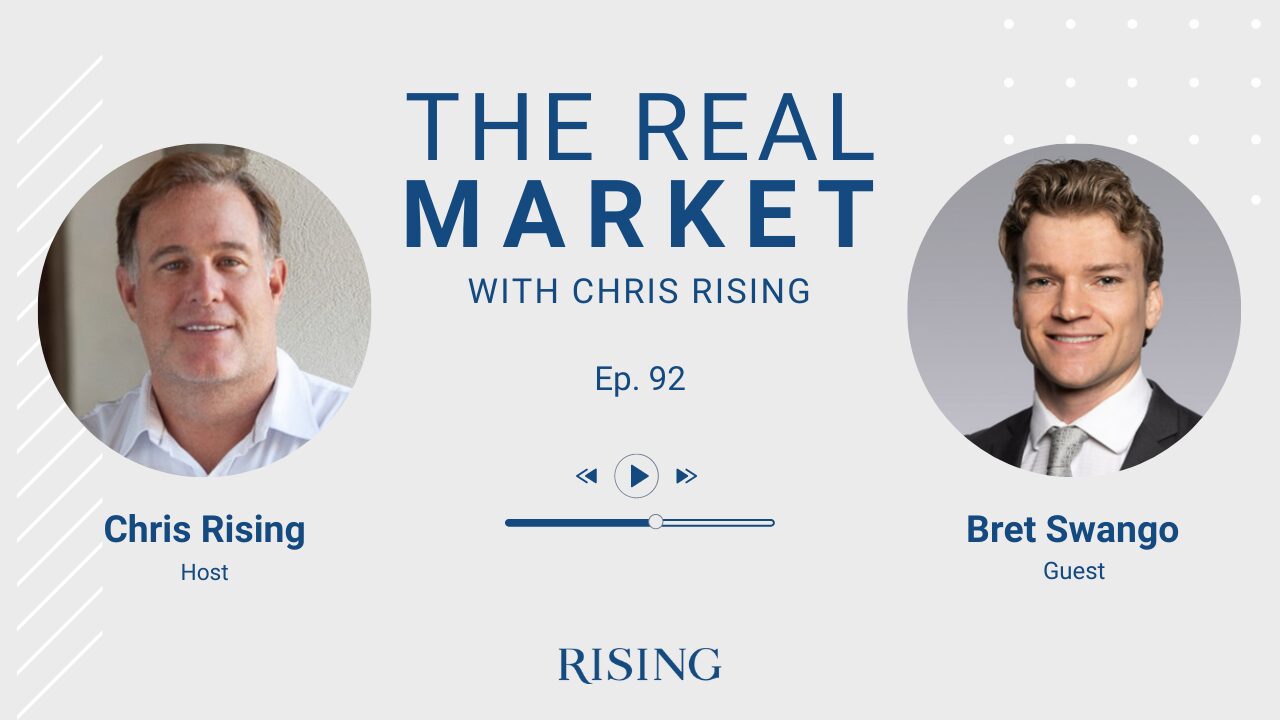
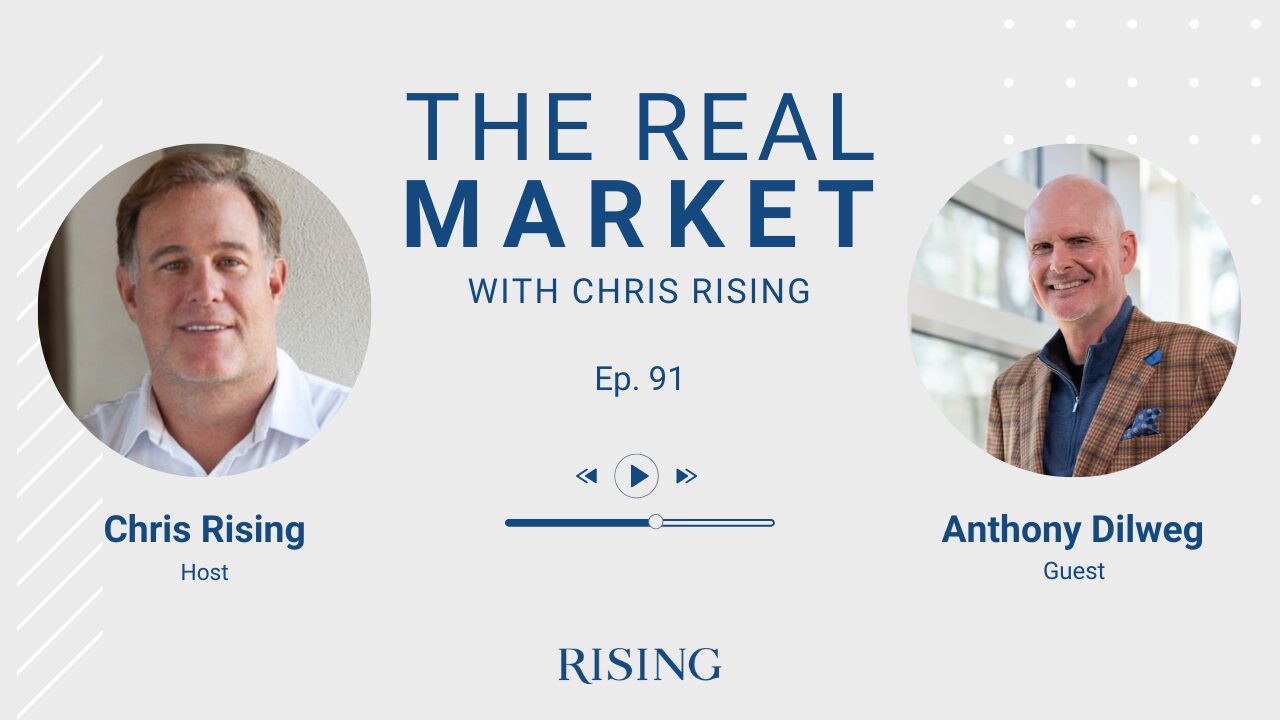
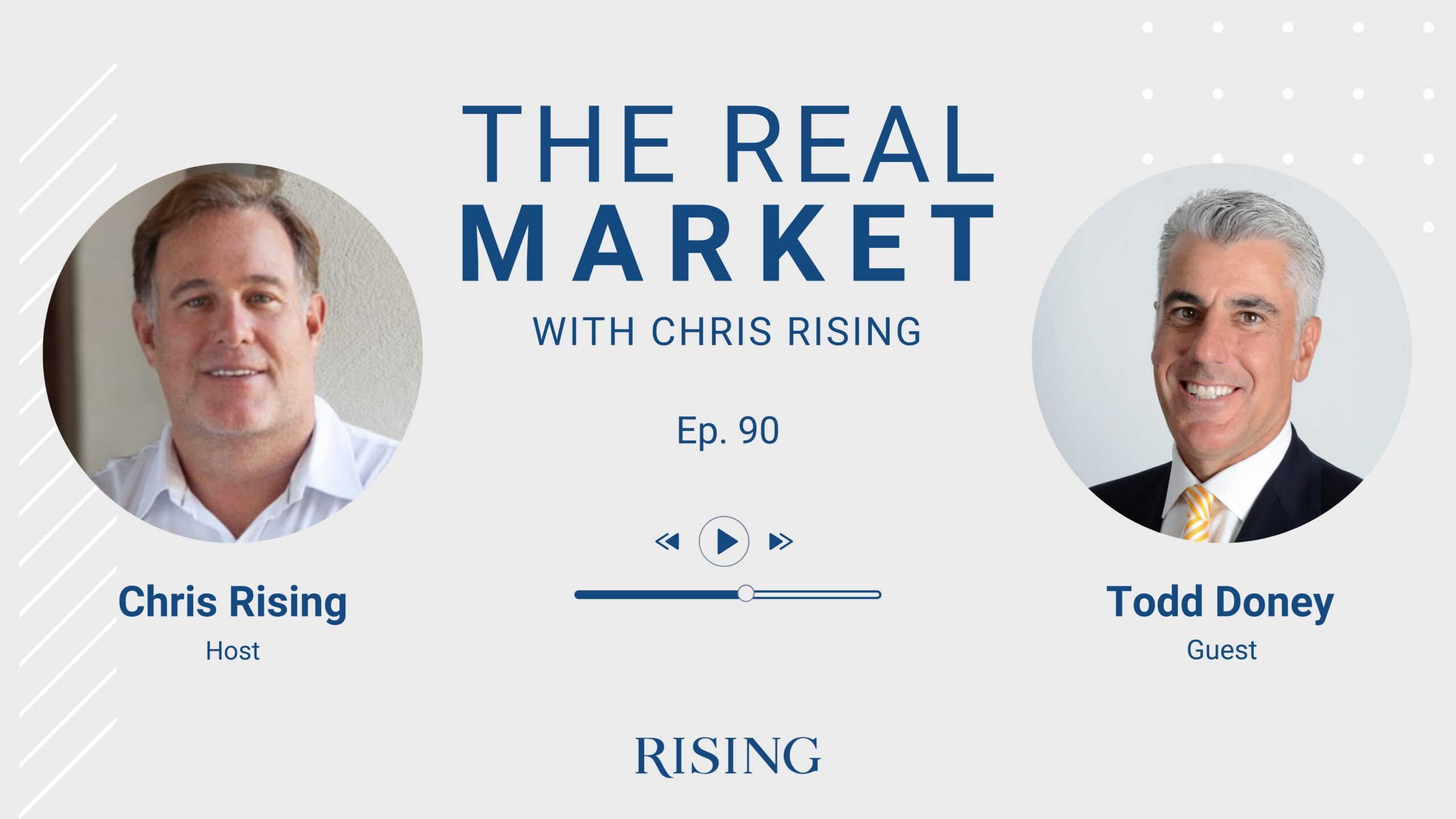
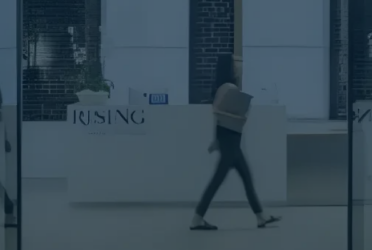
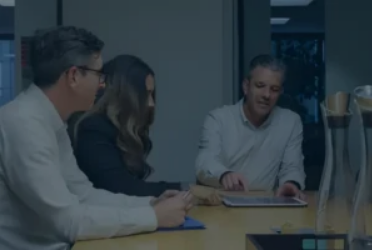
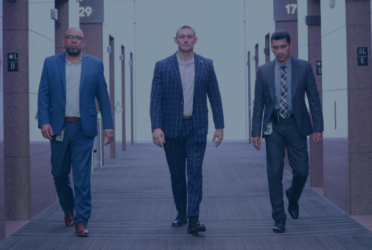
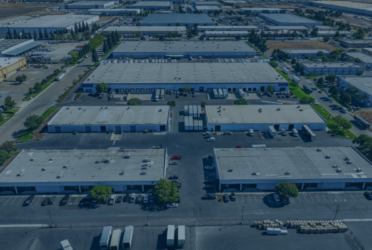
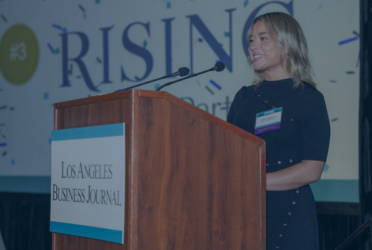
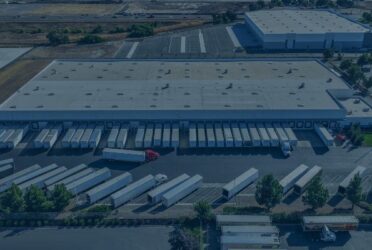
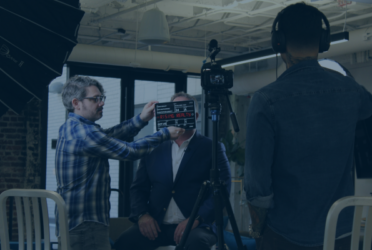
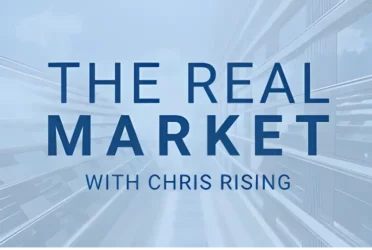 Podcast
Podcast